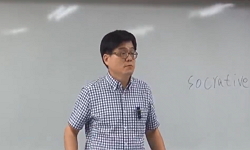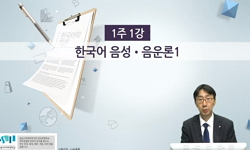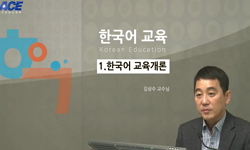The purpose of this study is twofold: first, to analyze cases involving Korean-language and historical and cultural educational materials related to Korea’s UNESCO World Heritage Sites ; second, to explore both the significance and value of using mo...
http://chineseinput.net/에서 pinyin(병음)방식으로 중국어를 변환할 수 있습니다.
변환된 중국어를 복사하여 사용하시면 됩니다.
- 中文 을 입력하시려면 zhongwen을 입력하시고 space를누르시면됩니다.
- 北京 을 입력하시려면 beijing을 입력하시고 space를 누르시면 됩니다.
https://www.riss.kr/link?id=A109677303
- 저자
- 발행기관
- 학술지명
- 권호사항
-
발행연도
2025
-
작성언어
Korean
-
주제어
한국어교육 ; 유네스코 세계기록유산 ; 한국문화 교육 ; 한국역사 교육 ; 동학농민운동 ; 4·19혁명 ; 5·18민주화운동 ; KBS특별생방송 ‘이산가족을 찾습니다’ ; 국채보상운동 ; 새마을운동 ; Korean language education ; UNESCO World Heritage ; Korean culture education ; Korean history education ; Donghak Peasant Movement ; April 19 Revolution ; May 18 Democratization Movement ; KBS Special Live Broadcasting ‘Finding Divorced Families’ ; The National Debt Redemption Movement ; Saemaul Movement
-
KDC
710
-
등재정보
KCI등재
-
자료형태
학술저널
- 발행기관 URL
-
수록면
447-474(28쪽)
- 제공처
-
0
상세조회 -
0
다운로드
부가정보
다국어 초록 (Multilingual Abstract)
The purpose of this study is twofold: first, to analyze cases involving Korean-language and historical and cultural educational materials related to Korea’s UNESCO World Heritage Sites ; second, to explore both the significance and value of using modern and contemporary materials related to World Heritage Sites for Korean historical and cultural education purposes.<BR/> UNESCO World Heritage Sites are a collective record of the world’s peoples and the evolution of human thoughts, discoveries, and achievements a legacy worth protecting and transmitting. South Korea has 18 World Heritage Sites. However, very few studies have examined Korea’s World Heritage Sites in the context of Korean-language education. And the items covered in previous studies are Hunminjeongeum, Donguibogam, and the May 18 Democratic Movement.<BR/> Using historical and cultural educational materials related to Korea’s World Heritage Sites to teach Korean history and culture will not only expand learners’ knowledge of Korean history and culture but also improve their Korean-language skills, enable them to discover commonalities and differences between Korean history and culture and world history and culture, explicate the differences from the specificity of each culture, and cultivate a mature sense of global citizenship capable of respecting and communicating with other historical and cultural traditions.<BR/> Therefore, this study focused on modern and contemporary Korean history and culture and examined the significance and value of education related to the Donghak Peasant Movement, the April 19 Revolution and the May 18 Democratization Movement, the KBS special live broadcast “Finding Divorced Families,” the National Debt Redemption Movement, and Saemaul Undong. Future research should examine the composition of educational materials and the preparation of teaching and learning guidance plans that can be used in the field of education.
동일학술지(권/호) 다른 논문
-
- 중앙어문학회
- 최윤(Choi, Youn)
- 2025
- KCI등재
-
- 중앙어문학회
- 송미영(Song, Miyoung)
- 2025
- KCI등재
-
인간 자연 발화와 AI TTS 발화의 속도 특성 비교 연구 : Parselmouth 활용 음향 분석
- 중앙어문학회
- 임현열(Im, Hyeonyoel)
- 2025
- KCI등재
-
- 중앙어문학회
- 이래호(Lee, Raeho)
- 2025
- KCI등재





 DBpia
DBpia






